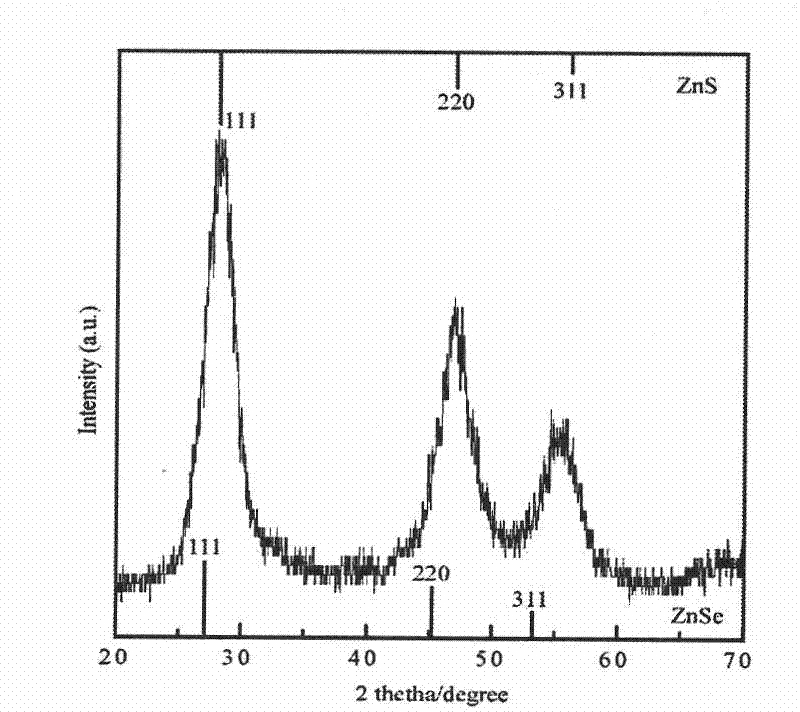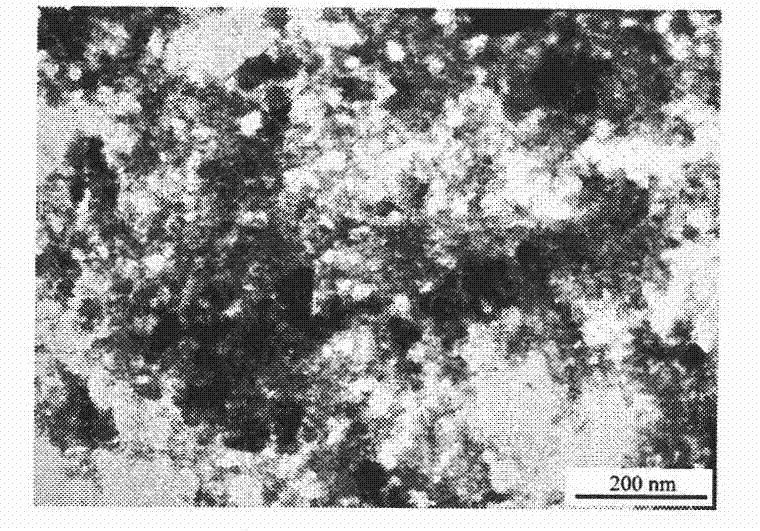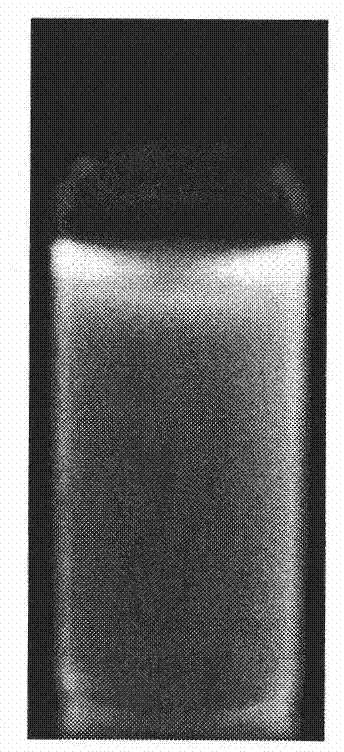Method for synthesizing water-soluble Pt: ZnSe(S) alloyed nanometer crystal by using hydro-thermal method
A technology of alloy nanocrystals and water solubility, which is applied in the field of preparation of nano-luminescent materials, can solve the problems of low fluorescence quantum yield and achieve the effects of good water solubility, large synthesis amount, and improved crystal quality
- Summary
- Abstract
- Description
- Claims
- Application Information
AI Technical Summary
Problems solved by technology
Method used
Image
Examples
Embodiment 1
[0032] 1. First mix 0.439g zinc acetate and 1.0614g 3-mercaptopropionic acid, dilute to 50ml with water, mix and stir for 5 minutes.
[0033] 2. Add 10ml of 0.001M platinum tetrachloride solution to the solution in step 1, and continue stirring for 5 minutes.
[0034] 3. The pH of the solution in step 2 was adjusted to 8 with sodium hydroxide solution, at this time, argon gas was passed into the alkaline solution, and oxygen was removed by bubbling for 10 minutes to obtain an oxygen-free aqueous solution.
[0035] 4. Under the protection of argon, dissolve 0.079g of selenium powder and 0.0757g of sodium borohydride in 5ml of ultrapure water, heat to 40°C, and react for 30 minutes to prepare NaHSe stock solution.
[0036] 5. Quickly inject the NaHSe stock solution prepared in step 4 into the alkaline anaerobic aqueous solution prepared in step 3.
[0037] 6. Continue to stir under the protection of argon for 10 minutes, transfer the solution to a 200ml polytetrafluoroethylene ...
Embodiment 2
[0040] 1. First mix 0.6585g of zinc acetate and 0.9553g of 3-mercaptopropionic acid, add water to dilute to 60ml, mix and stir for 10 minutes.
[0041] 2. Add 10ml of 0.002M platinum tetrachloride solution to the solution in step 1, and continue stirring for 5 minutes.
[0042] 3. The pH of the solution in step 2 was adjusted to 9 with sodium hydroxide solution, at this time, argon gas was passed into the alkaline solution, and oxygen was removed by bubbling for 20 minutes to obtain an oxygen-free aqueous solution.
[0043] 4. Under the protection of argon, dissolve 0.079g of selenium powder and 0.1136g of sodium borohydride in 1ml of ultrapure water, heat to 50°C, and react for 1 minute to prepare NaHSe stock solution.
[0044] 5. Quickly inject the NaHSe stock solution prepared in step 4 into the alkaline anaerobic aqueous solution prepared in step 3.
[0045] 6. Continue to stir under the protection of argon for 20 minutes, transfer the solution to a 200ml polytetrafluoroeth...
Embodiment 3
[0048] 1. First mix 1.0975g of zinc acetate and 1.0614g of 3-mercaptopropionic acid, add water to dilute to 70ml, mix and stir for 15 minutes.
[0049] 2. Add 10ml of 0.004M platinum tetrachloride solution to the solution in step 1, and continue stirring for 5 minutes.
[0050] 3. Adjust the pH of the solution in step 2 to 9.5 with sodium hydroxide solution. At this time, nitrogen gas is passed into the alkaline solution, and oxygen is removed by bubbling for 15 minutes to obtain an oxygen-free aqueous solution.
[0051] 4. Under nitrogen protection, dissolve 0.079g of selenium powder and 0.1514g of sodium borohydride in 20ml of ultrapure water, heat to 80°C, and react for 5 minutes to prepare NaHSe stock solution.
[0052] 5. Quickly inject the NaHSe stock solution prepared in step 4 into the alkaline anaerobic aqueous solution prepared in step 3.
[0053] 6. Continue to stir under nitrogen protection for 15 minutes, then transfer the solution to a 200ml polytetrafluoroethyl...
PUM
| Property | Measurement | Unit |
|---|---|---|
| spectroscopy | aaaaa | aaaaa |
Abstract
Description
Claims
Application Information
 Login to View More
Login to View More - R&D
- Intellectual Property
- Life Sciences
- Materials
- Tech Scout
- Unparalleled Data Quality
- Higher Quality Content
- 60% Fewer Hallucinations
Browse by: Latest US Patents, China's latest patents, Technical Efficacy Thesaurus, Application Domain, Technology Topic, Popular Technical Reports.
© 2025 PatSnap. All rights reserved.Legal|Privacy policy|Modern Slavery Act Transparency Statement|Sitemap|About US| Contact US: help@patsnap.com



